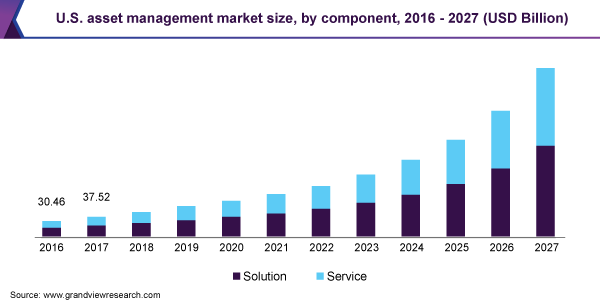da-kuk
What Is CaliberCos?
Scottsdale, Arizona-based CaliberCos (CWD) was founded to operate as a vertically integrated asset management company to enable investors to have access to middle-market investment vehicles, private syndicates and direct investments.
Management is headed by Chairman and CEO John C. “Chris” Loeffler, II, who has been with the firm since inception and was previously Senior Associate at PwC in Phoenix.
The company’s primary offerings include:
-
Real estate
-
Private equity
-
Debt facilities
As of June 30, 2022, CaliberCos has booked fair market value investment of $32.8 million in equity as of June 30, 2022 from investors.
The firm markets its investment products directly to family offices and institutions and through outside investment advisors.
The company’s investment opportunities are typically projects ‘that range in value between $5 million and $50 million.’
CaliberCos’ Market & Competition
According to a 2020 market research report by Grand View Research, the global market for asset management was an estimated $217 billion in 2019 and is forecast to reach $1.37 trillion by 2027.
This represents a forecast CAGR of 25.9% from 2020 to 2027.
The main drivers for this expected growth are a growing range and complexity of investment opportunities as well as an increasing digitization of asset management processes.
Also, below is a chart showing the historical and projected future growth trajectory of the U.S. asset management market:
U.S. Asset Management Market (Grand View Research)
Major competitive or other industry participants include:
-
Hedge funds
-
Real estate funds
-
Financial institutions
-
Private equity funds
-
Corporate acquirers
-
Others
CaliberCos’ IPO Date & Details
The initial public offering date, or IPO, for CaliberCos has not yet been announced by the company.
(Warning: Compared to stocks with more history, IPOs typically have less information for investors to review and analyze. For this reason, investors should use caution when thinking about investing in an IPO, or immediately post-IPO. Also, investors should keep in mind that many IPOs are heavily marketed, past company performance is not a guarantee of future results and potential risks may be understated.)
CaliberCos intends to raise $8.8 million in gross proceeds from an IPO of its Class A common stock, offering 1.6 million shares at a proposed midpoint price of $5.50.
Class A common stockholders will receive one vote per share and Class B shareholders will be entitled to ten (10) votes per share.
The S&P 500 Index no longer admits firms with multiple classes of stock into its index.
Class B shareholders, who are Chairman and CEO John C. Loeffler, II and President and Chief Operating Officer Jennifer Schrader, will together have voting control of the company post-IPO.
No existing shareholders have indicated an interest to purchase shares at the IPO price.
Assuming a successful IPO, the company’s enterprise value at IPO would approximate $353 million, excluding the effects of underwriter over-allotment options.
The float to outstanding shares ratio (excluding underwriter over-allotments) will be approximately 4.54%. A figure under 10% is generally considered a ‘low float’ stock which can be subject to significant price volatility.
Management says it will use the net proceeds from the IPO as follows:
As of the date of this prospectus, we currently intend to use the net proceeds we receive from this offering for general corporate purposes, including working capital, operating expenses and capital expenditures. We may also use a portion of the net proceeds to acquire complementary businesses, products, services or technologies. However, we do not have agreements or commitments to enter into any acquisitions at this time.
(Source – SEC)
Management’s presentation of the company roadshow is not available.
Regarding outstanding legal proceedings, management did not characterize the firm’s exposure to legal claims, if any.
The sole listed bookrunner of the IPO is Revere Securities.
How To Invest In The Company’s Stock: 7 Steps
Investors can buy shares of the stock in the same way they may buy stocks of other publicly traded companies, or as part of the pre-IPO allocation.
Note: This report is not a recommendation to purchase stock or any other security. For investors who are interested in pursuing a potential investment after the IPO is complete, the following steps for buying stocks will be helpful.
Step 1: Understand The Company’s Financial History
Although there is not much public financial information available about the company, investors can look at the company’s financial history on their form S-1 or F-1 SEC filing (Source).
Step 2: Assess The Company’s Financial Reports
The primary financial statements available for publicly-traded companies include the income statement, balance sheet, and statement of cash flows. These financial statements can help investors learn about a company’s cash capitalization structure, cash flow trends and financial position.
My summary of the firm’s recent financial results is below:
The company’s financials have produced increasing topline revenue, lower negative operating profit and a swing to cash flow from operations.
Free cash flow for the twelve months ended June 30, 2022, was negative ($4.5 million).
Marketing and Advertising expenses as a percentage of total revenue have dropped as revenue has increased; its Marketing and Advertising efficiency multiple rose to 19.7x in the most recent reporting period.
The firm currently plans to pay no dividends and to retain any future earnings to reinvest back into business growth initiatives.
Step 3: Evaluate The Company’s Potential Compared To Your Investment Horizon
When investors evaluate potential stocks to buy, it’s important to consider their time horizon and risk tolerance before buying shares. For example, a swing-trader may be interested in short-term growth potential, whereas a long-term investor may prioritize strong financials ahead of short-term price movements.
Step 4: Select A Brokerage
Investors who do not already have a trading account will begin with the selection of a brokerage firm. The account types commonly used for trading stocks include a standard brokerage account or a retirement account like an IRA.
Investors who prefer advice for a fee can open a trading account with a full-service broker or an independent investment advisor and those who want to manage their portfolio for a reduced cost may choose a discount brokerage company.
Step 5: Choose An Investment Size And Strategy
Investors who have decided to buy shares of company stock should consider how many shares to purchase and what investment strategy to adopt for their new position. The investment strategy will guide an investor’s holding period and exit strategy.
Many investors choose to buy and hold stocks for lengthy periods. Examples of basic investing strategies include swing trading, short-term trading or investing over a long-term holding period.
For investors wishing to gain a pre-IPO allocation of shares at the IPO price, they would ‘indicate interest’ with their broker in advance of the IPO. Indicating an interest is not a guarantee that the investor will receive an allocation of pre-IPO shares.
Step 6: Choose An Order Type
Investors have many choices for placing orders to purchase stocks, including market orders, limit orders and stop orders.
-
Market order: This is the most common type of order made by retail traders. A market order executes a trade immediately at the best available transaction price.
-
Limit order: When an investor places a buy limit order, they specify a maximum price to be paid for the shares.
-
Stop order: A buy-stop order is an order to buy at a specified price, known as the stop price, which will be higher than the current market price. In the case of buy-stop, the stop price will be lower than the current market price.
Step 7: Submit The Trade
After investors have funded their account with cash, they may decide an investment size and order type, then submit the trade to place an order. If the trade is a market order, it will be filled immediately at the best available market price.
However, if investors submit a limit order or stop order, the investor may have to wait until the stock reaches their target price or stop-loss price for the trade to be completed.
The Bottom Line
CWD is seeking to access public capital markets for its general unspecified corporate purposes.
The market opportunity for providing alternative asset management services in the U.S. is large and likely to grow at a very strong rate of growth over the coming years, so the firm enjoys strong growth dynamics in its favor.
Revere Securities is the sole underwriter and there is no data on the company’s IPO involvement led by the firm over the last 12-month period.
The primary risk to the company’s outlook is a period of higher cost of capital due to recent interest rate hikes in the U.S. This in turn may reduce net investment returns on capital invested.
As for valuation, management is asking investors to pay an EV/Revenue multiple of around 4.64x at IPO.
A basket of publicly held Investment & Asset Management companies as compiled by noted valuation expert Dr. Aswath Damodaran indicated an EV/Sales multiple of 5.42x and a net margin of 25.18% in January 2022.
The firm’s trailing twelve-month net margin is only 0.8%, so the IPO looks richly priced on a profitability basis.
While the company is growing revenue quickly and beginning to become profitable and cash flow positive, the U.S. economy is entering a period of slowdown or recession as interest rate hikes take their toll on activity and valuations.
I’m cautious on asset managers in the near term, so I’m on Hold for CWD’s IPO, although the low nominal price of the stock may attract day traders.


Be the first to comment